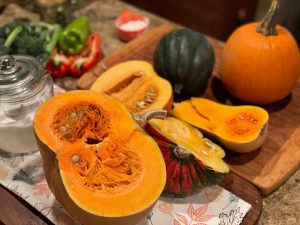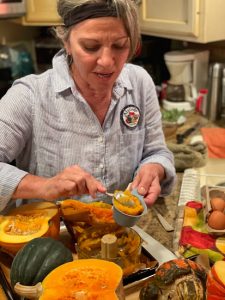Pump’ed Up!
Pump’ed Up!
Pumpkins are synonymous with autumn and they are more than just a feast for your eyes. Pumpkins are an extraordinary healthy food that is so versatile and nutritious. Central to fall celebrations, you can consume so much of the plant including the flowers, the flesh, the seeds, and the leaves. Commonly harvested around October, they… Read More »

Members of the Cucurbitaceae family, pumpkins are related to squash, cucumbers, melons, and gourds. Botanically classified as a fruit as they contain seeds, culinary speaking they are more commonly referred to as a vegetable, pumpkins have a long history in this country and earlier in Mexico. Pumpkins were recognized by our early American ancestors and Native Americans for their healthy qualities, where they roasted whole in an open fire, boiled into soups, and made into porridge and puddings. We embrace the same sentiments today using pumpkin in many of the same ways including making pumpkin soups, chilis, curries, pies, bread, muffins, and pickling the rinds. Learn more about pumpkins on this blog.
Using all parts of the pumpkin is a sustainable option and here are a few tips for using as many parts of the plant as possible. Pumpkin flowers can be used for stuffing with cheese and frying as a
We hope you enjoy eating in the season with us on our farm and try a few of these specially curated recipes by our culinary & educational specialist, Miss Jenn, including pumpkin gnocchi with herb butter stuffed and hearty pumpkin vegetable soup. Want to try making a truly memorable and delicious meal using pumpkin in season? Watch this video instruction of Miss Jenn preparing pumpkin gnocchi!
Best wishes from our farm kitchen to yours! XO







